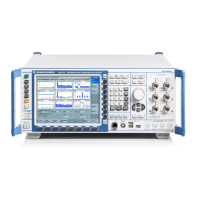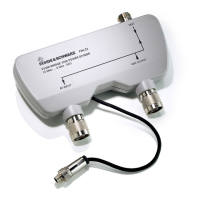Remote Control
R&S
®
CMW500
168User Manual 1173.9463.02 ─ 02
significant bit) is set to zero for all parts. Thus the contents of the register parts can be
processed by the controller as positive integer.
The sum bit is obtained from the EVENt and ENABle part for each register. The result is
then entered into a bit of the CONDition part of the higher-order register.
The instrument automatically generates the sum bit for each register. Thus an event can
lead to a Service Request throughout all levels of the hierarchy.
The five parts of an SCPI register have different properties and function as described
below.
CONDition
The CONDition part is permanently overwritten by the hardware or the sum bit of the next
lower register. Its contents always reflect the current instrument state.
This register part can only be read, but not overwritten or cleared. Reading the CONDition
register is nondestructive.
PTRansition
The two transition register parts define which state transition of the condition part (none,
0 to 1, 1 to 0 or both) is stored in the EVENt part.
The Positive TRansition part acts as a transition filter. When a bit of the CONDition part
is changed from 0 to 1, the associated PTR bit decides whether the EVENt bit is set to
1:
●
PTR bit = 1: the EVENt bit is set
●
PTR bit = 0: the EVENt bit is not set
This status register part can be overwritten and read at will. Reading the PTRansition
register is nondestructive.
NTRansition
The Negative TRansition part also acts as a transition filter. When a bit of the CONDition
part is changed from 1 to 0, the associated NTR bit decides whether the EVENt bit is set
to 1.
Status Reporting System

